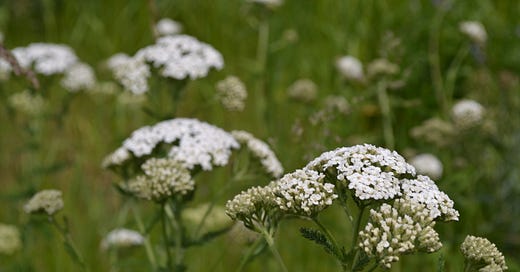First of all, a disclaimer: I’m not a medical doctor. If I were, I wouldn’t be giving you practical and useful advice, especially for free. That said, I want to introduce you to a common plant - a “weed” some would say - that is probably growing somewhere near you right now: Yarrow.
Yarrow seems to grow just about everywhere; in fact, the harsher the environment, the better. It’s resilient, plentiful, and extremely taken for granted. Recently, I started learning about this miracle plant’s many uses as I’ve been gathering it, storing it away and preserving it in my treasure chest of natural remedies.
Yarrow, formally known as Achillea millefolium, is also commonly known as nosebleed plant and soldier’s woundwort. These last two titles should be a clue as to its use as a blood medicine.
Yarrow blooms in full or partial sun from May until July and can be identified by its pinnate (meaning feather-shaped) leaves and cluster flowers. The bipinna…
Keep reading with a 7-day free trial
Subscribe to The Good Life to keep reading this post and get 7 days of free access to the full post archives.



